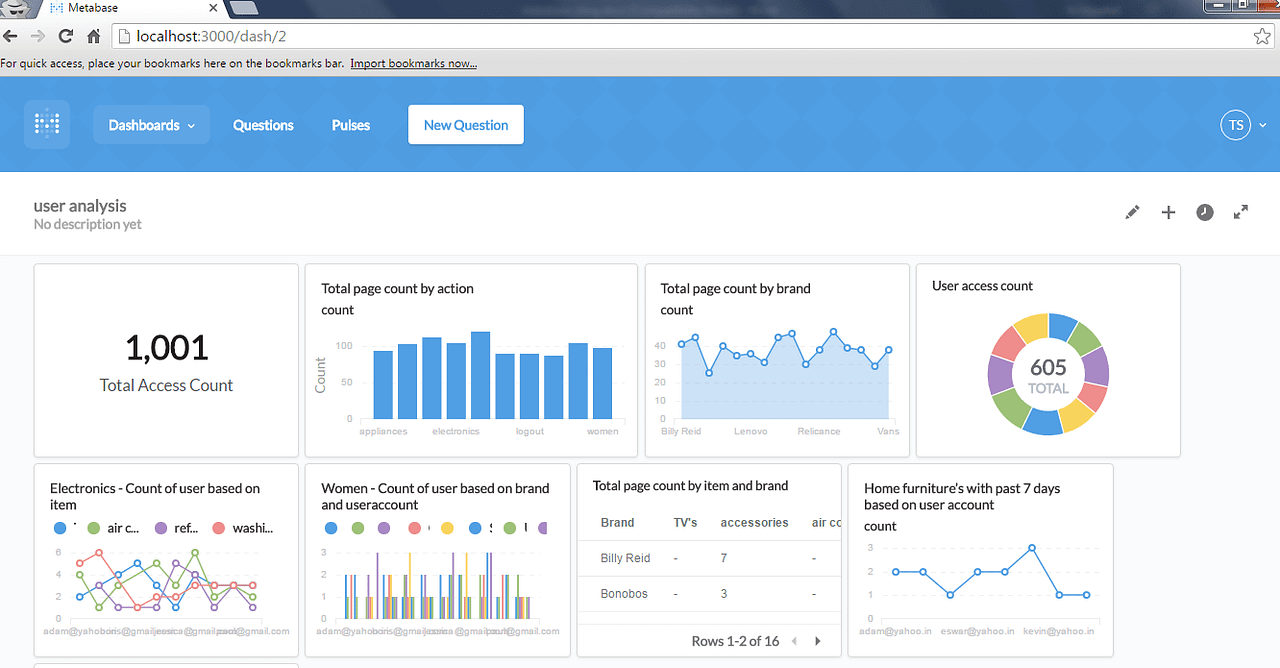
What kind of customer support do they provide?.What’s the pricing like? Is everything included, or will I have to pay extra for additional users or features?.Does it offer more sophisticated analytics, like complex ad-hoc queries, drill-downs, pivots, and easy ways to slice-and-dice data?.Does this tool offer the Chartio features and technology most important to my company?.Is this tool truly easy to use – will business users feel confident using this every day?.Here are some key questions you should ask yourself when evaluating Chartio competitors: To hit on the perfect Chartio alternative, companies should first work out exactly what they need from a business intelligence tool. Companies that especially valued data visualisation loved Chartio’s interactive dashboards and charts. It’s designed primarily with business users in mind, which made Chartio an ideal choice for companies looking to get their whole team engaged with data. Here’s what users have been paying at Chartio: Image source: Who is Chartio best for?Ĭhartio is most popular with medium-sized companies and above (think 100-250+ employees), though data-hungry startups also use the tool. Per-user pricing adds up and can make this an expensive tool for growing companies.Data visualisations are attractive but not highly customisable.Some limitations around query timing optimisation and controlling when charts fire or update.This could be frustrating for users who really want to slice and dice metrics, run complex ad-hoc queries, and get their hands dirty with granular business intelligence. Responsive, helpful support team – and a product team that listens to customers’ needs and regularly releases new iterations.It’s quick to get up and running – out-of-the-box setup, with connectors to multiple data source types.Dashboards are interactive, which means you can drill down, explore, and manipulate the data in real time.As its name suggests, Chartio excels at creating collaborative charts and dashboards from your data, with powerful data visualisation features and a reputation for great design.Drag-and-drop query builder means business users can engage in data discovery and get their questions answered – and data analysts can still use SQL if they want.Here’s our pick for the 5 best Chartio alternatives for deeper data analysis:Ĭhartio is an all-in-one BI platform that allows business users to perform data visualisations and no-code data analytics, with SQL functionality for techies who want to delve deeper. Looking for a Chartio Alternative that You’ll Love? Trevor.i o makes it easy for anyone to track data analytics in your SaaS company. This article talks you through 6 top alternatives to Chartio, breaking down their features, pricing, and who they serve best Migrating from Chartio is a chance to take your data analytics to the next level through tools that address gaps in Chartio’s functionality – and may even be more affordable.ĭifferent companies use Chartio in different ways, so it’s important to make sure the solution you choose fulfills your company’s needs. While Chartio offers fantastic dashboards, a strong no-SQL query builder and genuine ease of use, it has limitations – and the market now has far more options available than when you first signed up for Chartio.
#Metabase vs looker software
Finding a new business intelligence software on a time crunch is a major challenge, especially for long-term Chartio users.īut it’s also an opportunity.


Current users have until 1 March 2022 to find a solution and migrate their data. Now that Atlassian has acquired the tool, Chartio is being wound down. We've built many dashboards and scorecards this way, including our company "one page scorecard" that tracks.It’s decision time for Chartio customers. Somewhere in the middle, the Google Suite is a great solution for simple BI when you need broad sharing, low cost, and the ability to edit some of the data. However, it is a little more fragile to maintain without investing in some infrastructure. Their cloud service makes it easy to build and share interactive dashboards without any infrastructure.

I'm a fan of the data visualization principles of Edward Tufte and Stephen Few and Tableau does a great job in naturally guiding you to better dashboards and the speed at which it allows you to iterate your thoughts while developing dashboards is the best I've found. It has a good user experience for those developing dashboards, and a great UX for dashboard users. On the other end of the spectrum, Tableau has been my go-to for a long time now. The purpose of BI being to gain insight, the simplest and quickest tool works best, and often that's whatever built in reporting a SaaS platform provides, for me.


 0 kommentar(er)
0 kommentar(er)
